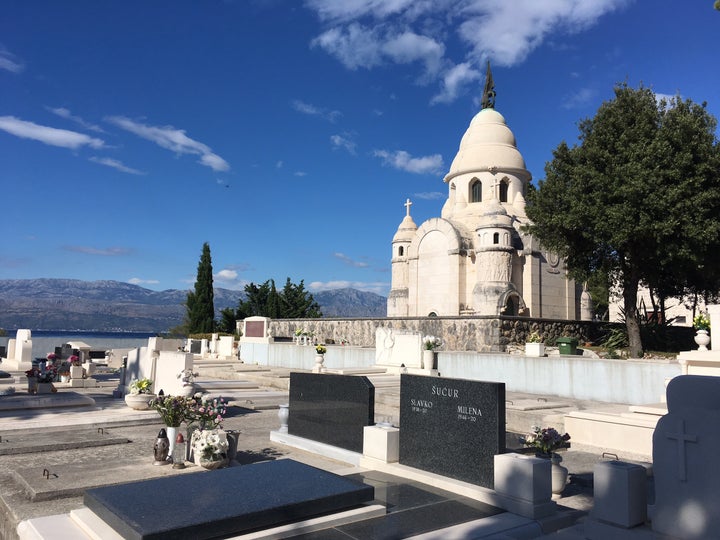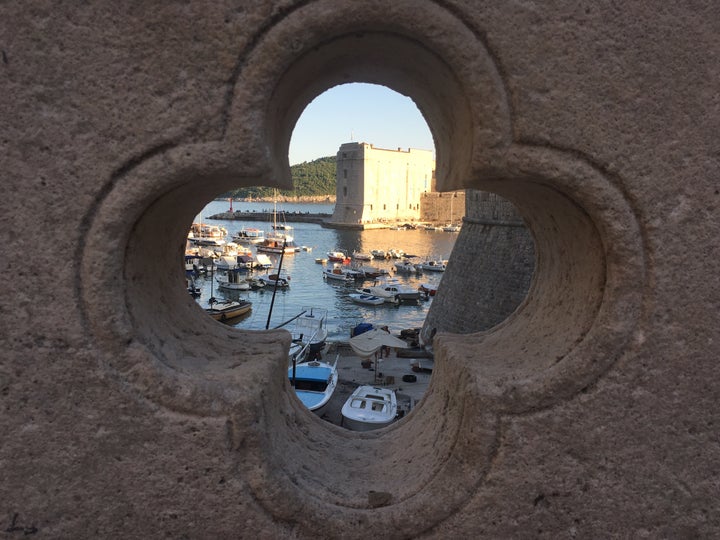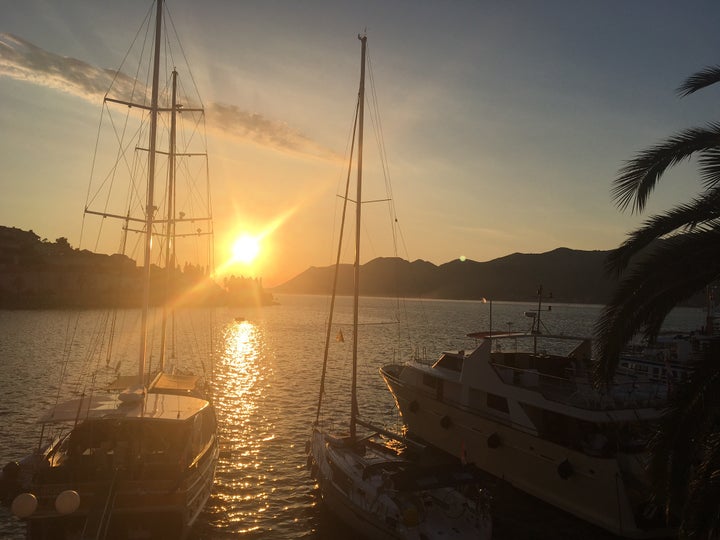
1. Split
This cosmopolitan capital of ancient times, founded nearly 2400 years ago by Greeks, gained its main attraction in 305 C.E. upon the construction of Diocletian’s Palace. Diocletian, an emperor with Dalmatian roots, left his mighty position in Rome to retire to Split and build his spectacular retirement home. Today, the Palace is still vibrant with life, its basement housing vendors with local wares, its main square home to restaurants and musicians. For one of my favorite spots in Split, take the steep stairs from the square into a courtyard with high walls and an open dome staring into space, seeming to stretch to eternity. The walls of the palace now form the walls to Split’s old town. The narrow streets wind through the city, music from bars and open-air juice and coffee shops bouncing against the walls. To visit Split is to see the fine line between today and yesterday effortlessly bounded across; restaurants offer ancient dishes with modern twists, electric guitar notes twist from the palace of a Roman emperor, motor boats cut across the water that was once the primary connector between this city to the rest of the world.
Insider Tip: Take a Day Trip to Brač
Take a break from the ever-popular Split to visit Brač, an island popular with locals, via ferry. Of several ports available, I recommend stopping at Supetar. From the ferry stop, first visit the Church of Saint Peter, a picturesque white church with a bell tower accessible by a grand flight of stairs. From there, walk along the coastline and soak in the Croatian breeze, stopping at one of the seaside restaurants. A final must-see is the Supetar Graveyard, visible across the whole island and from the sea, with its stunning white mausoleum and striking sculptures.

2. Dubrovnik
The tourism capital of Croatia, Dubrovnik’s primary attraction is the Old Town – its foundations dating back to the eighth century. Set on the coastline, Dubrovnik is a key destination for cruises and day trips, the sea breeze and brilliant sun dazzling during the summer. To view Dubrovnik from above, tour the city walls, which offer vistas of the Old Harbour and the red and brown roofs of the Old Town as well as the surrounding hills. In the city, attractions include the third oldest pharmacy in Europe (their creams and lip balms are created from local, natural ingredients), the Rector’s palace, and Big Onofrio’s Fountain. The Dubrovnik Cathedral sits atop a hill with a flight of stairs based on Rome’s Spanish Steps. The inside of the Cathedral is stunningly ornate, with a replica of the grotto of Our Lady of Lourdes and a triptych by Titian.
Insider Tip: See Dubrovnik by Night
To catch a true glimpse of Dubrovnik, set out to explore the city in the evening – after the daytime traffic has departed. The streets are lined with bars open late into the night with live music and creative drinks. In addition, keep a lookout for the “guards” who march through town in traditional uniforms at 9:30 every night.

3. Korčula Town
Korčula, the birthplace of Marco Polo, has been passed from world power to world power across time: from their legendary foundation by Antenor of Troy to Rome to Byzantium to Venice and beyond, each leaving their mark on the city. A mix of Greek island and Italian seaside town with a uniquely Croatian flair, Korčula is home to a beautiful old town, reachable by a half-bridge of stairs leading into a tower with a Venetian winged-lion frontispiece. Trace your way through the town: there are three main streets running parallel to one another – one through the center of town and the other two facing opposite sides of the waterfront. Korčula is home to an amalgamation of wonderful restaurants featuring fresh seafood, wine, and produce from the island; I recommend Konoba Belin, a restaurant a ten minute taxi ride away from the old town to the countryside, and Aterina and Konoba Mareta in the town.
Insider Tip: Watch the Moreška
The Moreška, a sword dance formerly performed in Renaissance courts across Europe, is now only practiced in Korčula. The dance symbolizes the middle age tensions during the Reconquista between Christians and Moors; this mock battle is fought between the red-dressed King Osman and the black-dressed King Moro and their respectively black and red costumed soldiers over the beautiful Bula. The intricate Moreška is performed twice weekly during the high season for visiting tourists and is preceded by a typical Croatian concert featuring male and female singers, a mandolin, a cello, and a fiddle.
Croatia is a country of history and of today, students flocking to the party scene on islands like Hvar and the infamous concerts of Split and tourists flocking to the ancient sites of this country – be it the Palace of Diocletian or the centuries-old vineyards and olive oil presses of the striking Croat countryside. Croatia has seen its fair share of wars and horrors – especially in the last thirty years – but today it bounces back as a tourism capital for you and me.
